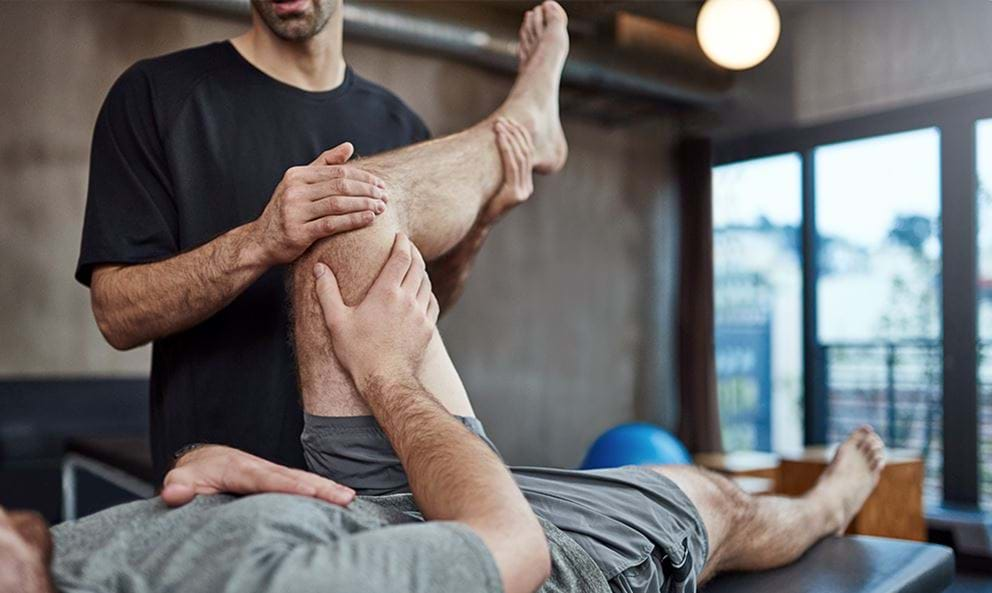How to Prevent & Relieve Post Workout Muscle Soreness

Feeling slightly sore muscles the next day or so after a workout can be quite common. There’s even a term for it – delayed onset muscle soreness or DOMS for short which we explain in our guide all about DOMS.
Luckily, there are some things you can do to help prevent and ease muscle soreness during and after your training – and say goodbye to those dreaded DOMS!
WHEN TRAINING

Make sure to warm up and cool down properly
Including a warmup before you work out is said to help reduce delayed onset muscle soreness and help prevent injury. How you warm up will largely depend on your needs and goals but as a general guideline, a warmup can look something like this:
- A few minutes of light cardio to gradually elevate the heart rate and muscle temperature. For example, if you’re doing a leg workout, you can try cycling on a bike for 3-5 minutes with a light resistance.
- Work through the movement patterns that are in your workout. For example, if you’re going to do some barbell back squats, you may want to mimic the movement with some bodyweight squats or squats using a lighter weight before you perform the exercise.
- Some dynamic stretches to work on your mobility and increase range of motion. These are just a few examples: groiners, leg swings and YWT stretch.
After completing your workout, it’s a good idea to include a cool down that helps to slowly lower the heart rate back to your usual rate and include some stretches to help loosen the muscles you’ve worked. As a general guideline, hold a stretch for between 20-30 seconds at an intensity that you’re comfortable with. For examples of cool down stretches, check out our stretch guide, and our beginner's guide to cooling down.
Adjust your training volume or intensity
Whilst muscle soreness can indicate that you’ve challenged your body, feeling sore does not necessarily mean that you’ve done a workout or that you will see better results by feeling soreness. If feeling pretty sore after a workout is a common occurrence, you may want to look at reducing your training volume or intensity. It’s important to get the balance right to avoid overtraining or burnout which can lead to an increased risk in injury.
Similarly, if you’re ready to progress to challenge yourself and progress to the next level, make sure to increase your training gradually so your body can adapt to new training stimulus.
Stay hydrated
Some studies show that staying hydrated can help reduce the severity of muscle soreness after a workout. Make sure to drink enough water throughout the day and keep a bottle handy with you when you go to the gym. Not sure you’re drinking enough water? Check out our how to stay hydrated guide for tips.
BETWEEN YOUR WORKOUTS

Make sure to get enough rest
Your body need rest and time to recover from workouts so you can come back stronger and fitter. Make sure to give your body enough time to recover. Getting a good night’s sleep can help too.
When it comes to weight training, the time you’re resting is when the muscle enables you to get stronger – so while you may think the work is done during the training, the time you’re resting is also important in the muscle building process.
Try some light stretching or exercise
Some light stretching may help to relieve some of the aches in your muscles and is a good thing to incorporate into your workout routine to stay nice and mobile, as well as improve flexibility. Light exercise for 10 – 30 minutes such as brisk walking or cycling, may help to reduce muscle soreness and can be done on a rest day without impeding your recovery.
Hot shower or cold bath – or both!
Taking a hot shower is said to help dilate blood vessels and promote blood flow which can help relax muscles, whilst cold water is said to help reduce the blood flow to the muscle and reduce inflammation. While the debate is out there on the effectiveness of hot/ cold therapy, some people swear by it. A common recovery method used by athletes is taking take ice baths after dipping into a hot shower – also known as contrast water therapy - after an intense training session.
Myofascial release
Myofascial release in the form of a massage or foamrolling may help in reducing muscle soreness by smoothing out knotted muscles. Try holding a foamroller at spots where your muscles feel tight for a few seconds until the tension eases, or massaging trigger points by applying pressure using your own bodyweight to release any muscle tightness. Find out the benefits of a massage in our massage your way to good health guide.
These are some ways you can try to help you recover from your workouts. Bear in mind how well you recover will be based on several factors including your genetics and other lifestyle factors. What works for one person may not work for another so focus on creating a recovery routine which leaves you feeling better and one that you can realistically stick to in the long run.
There is a difference between feeling pain and feeling soreness. If you think what you are feeling is pain, then please speak with your Doctor or a qualified professional like a Physiotherapist.


